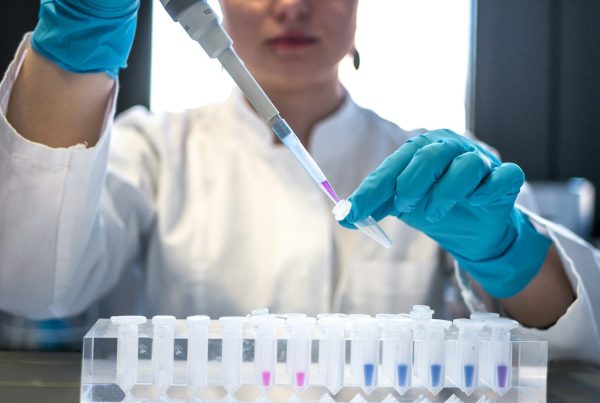As the global obesity epidemic continues to escalate, researchers are exploring innovative approaches to address this multifaceted health crisis. One promising therapy that has garnered significant attention is red light therapy (RLT), a non-invasive, drug-free treatment that harnesses the power of specific light wavelengths to stimulate cellular processes and potentially alleviate obesity-related disorders.
The Obesity-Inflammation Connection
Obesity is a complex condition closely linked to chronic inflammation, a state in which the body’s immune system becomes dysregulated, leading to a cascade of metabolic disturbances. This persistent low-grade inflammation is a driving force behind many obesity-related disorders, including insulin resistance, type 2 diabetes, cardiovascular disease, and non-alcoholic fatty liver disease (NAFLD).
Red Light Therapy: A Potent Anti-Inflammatory Agent
Numerous studies have demonstrated the remarkable anti-inflammatory properties of RLT, making it a promising therapeutic tool for combating obesity-related inflammation. A 2021 study published in the Journal of Photochemistry and Photobiology B: Biology found that RLT effectively reduced inflammation in obese individuals, leading to improved insulin sensitivity and better glycemic control.[1]
Enhancing Lymphatic Drainage and Detoxification
RLT may also benefit individuals with obesity by improving lymphatic drainage and circulation. A study published in the Journal of Photobiomodulation, Photomedicine, and Laser Surgery demonstrated that RLT can enhance lymphatic flow and circulation, potentially facilitating more efficient detoxification processes.[2]
Optimizing Mitochondrial Function and Energy Metabolism
Mitochondrial dysfunction is often observed in obesity and related metabolic disorders. RLT has been shown to stimulate mitochondrial function, leading to increased adenosine triphosphate (ATP) production and improved cellular energy utilization.[1] By optimizing mitochondrial function and energy metabolism, RLT may help address metabolic imbalances contributing to obesity and related conditions.
Targeting Fat Cells: Adipocyte Absorption and Lipase Stimulation
RLT has been found to directly target fat cells, known as adipocytes, by absorbing laser light and increasing cyclic adenosine monophosphate production. This biochemical process stimulates cytoplasmic lipase, an enzyme that plays a pivotal role in shrinking fat cells by converting triglycerides into fatty acids and glycerol.[3][4]
Enhancing Fat Metabolism and Insulin Regulation
An animal study demonstrated that infrared photobiomodulation therapy, a form of RLT, can enhance glucose metabolism and insulin regulation in adipose tissue.[4] This suggests that RLT has the potential to improve metabolic functions in fat tissue, which is crucial for individuals with obesity, particularly those with obesity induced by a high-fat diet.
Synergistic Effects with Exercise
Interestingly, studies have shown that combining RLT with exercise can yield synergistic effects. In a study published in Lasers in Surgery and Medicine, obese women who received RLT immediately after exercise experienced a greater reduction in fat mass and an increase in skeletal muscle mass and adiponectin concentration compared to a control group.[3]
While the research on RLT for obesity and metabolic disorders is still in its early stages, the existing evidence is promising and warrants further investigation. As scientists continue to unravel the mechanisms underlying RLT’s therapeutic effects, there is growing hope that this non-invasive, drug-free approach may one day become a valuable adjunct therapy in the management of obesity and its associated metabolic complications.
It is important to note that RLT should not be viewed as a standalone solution for obesity but rather as a complementary approach to be integrated with a comprehensive lifestyle intervention that includes a balanced diet, regular exercise, and other evidence-based strategies for weight management and metabolic health optimization.
As the global obesity crisis continues to escalate, innovative therapies like RLT offer a glimmer of hope in the ongoing quest to combat this complex and multifaceted health challenge.
Sources:
[1] https://deeplyvitalmedical.com/the-role-of-red-light-therapy-in-weight-loss-and-metabolism/
[2] https://aestheticbureau.com.au/red-light-therapy-and-its-effects-on-fat-cells/
[3] https://rougecare.co.uk/blogs/rouge-red-light-therapy-blog/red-light-therapy-a-new-hope-for-treating-obesity
[4] https://strivechiropracticwi.com/2024/03/11/unlocking-the-potential-of-red-light-therapy-for-weight-loss/
Citations:
[1] https://rougecare.co.uk/blogs/rouge-red-light-therapy-blog/red-light-therapy-a-new-hope-for-treating-obesity
[2] https://deeplyvitalmedical.com/the-role-of-red-light-therapy-in-weight-loss-and-metabolism/
[3] https://aestheticbureau.com.au/red-light-therapy-and-its-effects-on-fat-cells/
[4] https://strivechiropracticwi.com/2024/03/11/unlocking-the-potential-of-red-light-therapy-for-weight-loss/
[5] https://drruscio.com/red-light-therapy-pros-and-cons/






